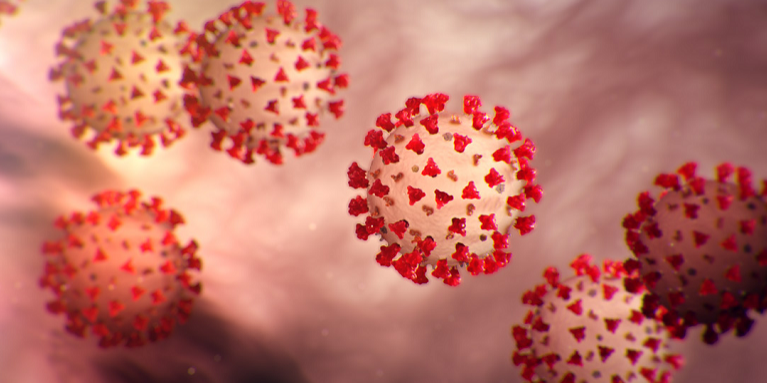Health October 21, 2024
The Start and Spread of Coronavirus: A Timeline

The COVID-19 pandemic has drastically impacted global life, but to understand how it all began and unfolded, it's important to track the key milestones in its emergence and spread. Here’s a detailed timeline explaining the major events related to the start and spread of the coronavirus, also known as SARS-CoV-2.
December 2019: Mysterious Illness in Wuhan, China
The coronavirus is believed to have originated in Wuhan, a city in China's Hubei province. In early December 2019, cases of a pneumonia-like illness began to emerge, and they were later linked to the Huanan Seafood Wholesale Market, where live wild animals were sold.
- December 8, 2019: The first known case of COVID-19 is reported in Wuhan.
- December 31, 2019: Chinese authorities alert the World Health Organization (WHO) of multiple cases of pneumonia of unknown cause.
January 2020: Identification and First Deaths
- January 7, 2020: Chinese scientists identify the novel virus as a new strain of coronavirus, later named SARS-CoV-2.
- January 11, 2020: The first death from COVID-19 is reported in China.
- January 13, 2020: The first confirmed case outside China is reported in Thailand.
- January 23, 2020: Wuhan is placed under lockdown as authorities attempt to contain the virus.
February 2020: Spread to Other Countries
- February 2020: Cases of COVID-19 are reported in countries outside Asia, including Europe and the Middle East. The virus spreads quickly, prompting travel restrictions and public health measures.
- February 9, 2020: The global death toll surpasses 800, exceeding that of the 2003 SARS epidemic.
March 2020: Declared a Pandemic
- March 11, 2020: The WHO officially declares COVID-19 a global pandemic as the virus spreads to more countries, causing widespread outbreaks.
- March 13, 2020: Countries like Italy and Spain begin imposing strict lockdowns to curb the rapid spread.
April 2020: Global Lockdowns and Health Crisis
- April 2020: The pandemic leads to unprecedented global lockdowns, severely affecting the global economy. Hospitals are overwhelmed with patients, and personal protective equipment (PPE) shortages are widespread.
- April 12, 2020: The worldwide death toll from COVID-19 exceeds 100,000.
Mid-2020: Waves of Infection
- June-August 2020: As lockdown measures are relaxed in various countries, new waves of infection occur. Countries like the U.S., Brazil, and India witness sharp increases in cases, making them global COVID-19 hotspots.
- July 2020: The race to develop a vaccine begins, with major pharmaceutical companies starting clinical trials.
Late 2020: Vaccine Development and Second Waves
- November 2020: The first vaccines from Pfizer-BioNTech and Moderna show promising results in clinical trials, with over 90% efficacy.
- December 2020: Countries start approving and rolling out vaccines to high-risk groups, but the second wave of infections peaks in several parts of the world, especially in Europe and the U.S.
2021: Vaccine Rollouts and Variants
- January 2021: Mass vaccination campaigns begin globally. However, new variants of the virus, such as the Delta variant, emerge and cause concern over vaccine effectiveness.
- June 2021: Over 2 billion doses of COVID-19 vaccines are administered globally, but many poorer nations struggle to access vaccines.
2022: Variants and Evolving Strategies
- January 2022: The Omicron variant spreads rapidly, but vaccines and prior infections appear to provide some protection, leading to fewer severe cases compared to previous waves.
- March 2022: With higher vaccination rates, many countries begin easing restrictions, though mask mandates and vaccination campaigns continue to help manage the virus.
2023: Transition to Endemic
- By 2023: Many countries transition to treating COVID-19 as an endemic disease, much like seasonal flu, with ongoing vaccination efforts, improved treatments, and adjustments to public health strategies.
| Date | Event |
|---|---|
| December 8, 2019 | First known case of COVID-19 reported in Wuhan, China. |
| December 31, 2019 | China alerts the World Health Organization (WHO) of pneumonia cases in Wuhan. |
| January 7, 2020 | Chinese scientists identify the novel virus as a new strain of coronavirus, SARS-CoV-2. |
| January 11, 2020 | First death from COVID-19 reported in China. |
| January 13, 2020 | First confirmed case outside China (Thailand). |
| January 23, 2020 | Wuhan is placed under lockdown. |
| February 9, 2020 | Global death toll surpasses 800, exceeding the 2003 SARS outbreak. |
| March 11, 2020 | WHO declares COVID-19 a global pandemic. |
| March 13, 2020 | Italy and Spain begin nationwide lockdowns. |
| April 12, 2020 | Global COVID-19 death toll exceeds 100,000. |
| June - August 2020 | New waves of infections hit various countries, including the U.S., Brazil, and India. |
| July 2020 | Major vaccine trials begin globally. |
| November 2020 | Pfizer-BioNTech and Moderna vaccines show promising results in trials. |
| December 2020 | Vaccine rollouts begin globally amid a second wave of infections in Europe and the U.S. |
| January 2021 | Global mass vaccination campaigns start, but new variants like Delta emerge. |
| June 2021 | Over 2 billion vaccine doses administered globally. |
| January 2022 | Omicron variant spreads rapidly, causing fewer severe cases compared to previous waves. |
| March 2022 | Many countries ease restrictions due to higher vaccination rates. |
| 2023 | COVID-19 transitions to endemic status in many countries, managed like seasonal flu. |
Summary
From its beginnings in a wet market in Wuhan to becoming a global pandemic, the timeline of COVID-19 reveals a rapidly evolving crisis that impacted nearly every country in the world. Key milestones include the virus’s identification in early January 2020, the global lockdowns that followed, the emergence of various waves, and the eventual development and distribution of vaccines. While COVID-19 is still present, the world has adapted to manage it with a mix of vaccinations, treatment strategies, and public health policies.
Sharing is sexy
Latest article
- Troubleshooting Guide: Resolving cURL Error 60 (SSL Certificate Problem) During Auth0 Callback
- Exploring the Sacred Arupadai Veedu: The Mythical Journey of Lord Murugan's Six Abodes
- The Start and Spread of Coronavirus: A Timeline
- Challenges in the Transition to Renewable Energy and The Future
- Types of Renewable Energy Sources and Role in Combating Climate Change
Categories
Topics
AI Artificial Intelligence CGI cinema error Hanuman php rajinikanth
Administrator